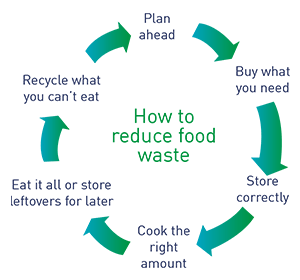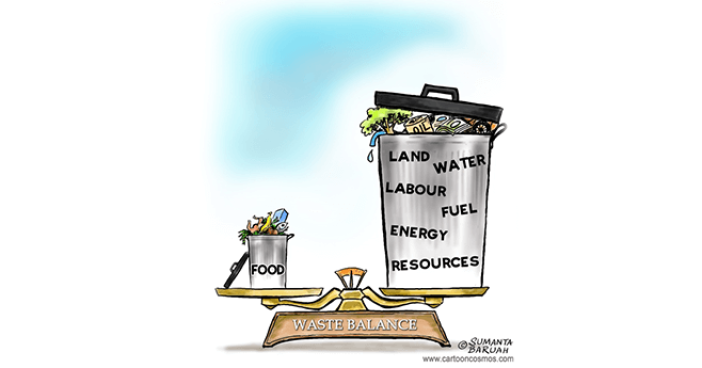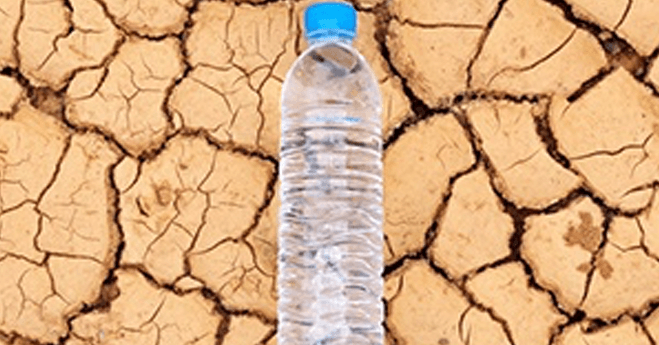 The drums have long been beating about climate change. Most of us have repeatedly heard the message of how every person can reduce their contribution to greenhouse gases through transportation and energy efficiency. But as individuals, as companies, as organizations and public agencies, what more can we do than changing light bulbs and driving more fuel efficient vehicles? What else can cause real, measurable reductions in the emissions course that the world is currently following? One overlooked area may surprise you.
The drums have long been beating about climate change. Most of us have repeatedly heard the message of how every person can reduce their contribution to greenhouse gases through transportation and energy efficiency. But as individuals, as companies, as organizations and public agencies, what more can we do than changing light bulbs and driving more fuel efficient vehicles? What else can cause real, measurable reductions in the emissions course that the world is currently following? One overlooked area may surprise you.
Food – that’s right, food. More specifically, it’s the wasting of food that is overlooked. It’s generally understood that growing and producing food requires a certain amount of energy input, which results in greenhouse gas emissions; but it is the waste of food that has recently gained international attention as a major source of greenhouse gas emissions.
The Food Wastage Footprint: Impacts on Natural Resources report, released by the Food and Agricultural Organization (FAO) of the United Nations, provides a comprehensive overview of the volume of wasted food, and the related impacts of this to loss of land, water and biodiversity. Impacts on climate change, as well as estimates on the direct cost of food wastage are also discussed.
In preparing the report, the FAO assessed the environmental impact of food wastage at a regional level and by commodity type in order to develop an understanding of the global impact, as well as identify regional and commodity hotspots.
How Much?
 The magnitude of the waste is astounding. According to the FAO report, approximately one-third of food produced for human consumption goes to waste, calculated as approximately 1.4 billion tons (1.3 Gtonnes) of edible food with another almost 1.8 billion tons (1.6 Gtonnes) of “primary product equivalents” which includes non-edible parts. This level of waste is equivalent to $750 billion dollars of food wasted annually, not to mention the hefty environmental toll. For greenhouse gas specifically, the emissions associated with the wasted food was estimated to be 3.3 billion metric tons of carbon dioxide equivalent in 2007. For reference, it is estimated that global greenhouse gas emissions were 49 billion metric tons of carbon dioxide equivalent in 2004.
The magnitude of the waste is astounding. According to the FAO report, approximately one-third of food produced for human consumption goes to waste, calculated as approximately 1.4 billion tons (1.3 Gtonnes) of edible food with another almost 1.8 billion tons (1.6 Gtonnes) of “primary product equivalents” which includes non-edible parts. This level of waste is equivalent to $750 billion dollars of food wasted annually, not to mention the hefty environmental toll. For greenhouse gas specifically, the emissions associated with the wasted food was estimated to be 3.3 billion metric tons of carbon dioxide equivalent in 2007. For reference, it is estimated that global greenhouse gas emissions were 49 billion metric tons of carbon dioxide equivalent in 2004.
Where is Food Wasted?
Food produced for human consumption is wasted pretty much every step of the way, from food production, processing, marking and consumption stages. But, as pointed out in the report, the farther along in the process, the greater the environmental impact of food waste. Think about it, the farther along in the process for a pound of beef is, the more refrigeration, transportation, processing activity and packaging is used. This sheds a whole new perspective on the food in one’s pantry, counter or refrigerator.
 Following the supply chain from agricultural production to consumption, the worldwide trend shows that most food is lost during agricultural production (about a third), less during post-harvest and storage, and the least volume of food is lost during processing. From processing, the volume of waste increases during distribution and even more during consumption. However, a breakdown of loss by region shows that waste occurence is quite different depending on where you live. In Europe, North America and Oceana, and industrialized Asia lead the pack on wasting food at the end of the process, with at least one-third of waste occurring at the consumption stage. In contrast, South and Southeast Asia wastes less than 5 percent of food at the consumption stage.
Following the supply chain from agricultural production to consumption, the worldwide trend shows that most food is lost during agricultural production (about a third), less during post-harvest and storage, and the least volume of food is lost during processing. From processing, the volume of waste increases during distribution and even more during consumption. However, a breakdown of loss by region shows that waste occurence is quite different depending on where you live. In Europe, North America and Oceana, and industrialized Asia lead the pack on wasting food at the end of the process, with at least one-third of waste occurring at the consumption stage. In contrast, South and Southeast Asia wastes less than 5 percent of food at the consumption stage.
What’s the Impact?
Besides the financial impact ($750 billion dollars lost annually to food wastage), issues of food security or world-wide demand for food, food wastage also generates unnecessary environmental impacts. As said, food waste is estimated to generate 3.3 billion metric tons of carbon dioxide equivalents in 2007 alone. That estimate does not include emissions from land use change. Compared to the 2004 global emissions inventory, food waste accounts for about 7 percent of the global inventory; and that’s just greenhouse gases.
The FAO report also examined the global water footprint of food wastage and found that food waste in 2007 accounted for 3.6 times the blue water footprint of total USA consumption, or about the volume of the annual discharge of the Volga River. It’s estimated that about 28 percent of the world’s land in agricultural production in 2007 were for commodities that were ultimately wasted. What that means for biodiversity is that agricultural land currently utilized to grow or produce food for human consumption aren’t being fully realized due to waste. Additional conversion of land to agricultural use could be partially reduced through reduction in food waste.

What to Do?
There are both economic and environmental incentives to change the current status of food waste, and waste reduction can occur on multiple fronts – from the home, institutions – such as schools, hospitals and prisons – by industry and by government agencies at all levels. Right here, right now, even the simple step of planning meals, reviewing food purchases versus consumption, and utilizing food prepared at home before it goes bad will have a positive impact. The three largest commodities contributing to the carbon footprint of wasted food are cereals, meats and vegetables. These three alone accounts for more than 60 percent of the greenhouse gas inventory for each region. In addition, the consumption phase of the food chain accounts for over 35 percent of the global greenhouse gas footprint of food waste. Targeting the consumption phase waste of cereals, meats and vegetables is something each of us can do today.
The FAO report breaks down food waste by region, by commodity, by carbon footprint, by food supply chain-phase. One can look through the report, find the parameters applicable to their industry, location or interests, and start the process of reducing food waste.
FirstCarbon Solutions (FCS) has the expertise to assist your organization in reducing wastage through innovative means just like we did for Compass Group. By simply providing a tool to monitor and provide verifiable metrics and resources to support its implementation, FCS reduced its client’s waste disposal, as well as energy and water use. We can do this for you, too.To find out more about how FCS can help, browse through our solutions tab and select your needs by industry, focus or service.





